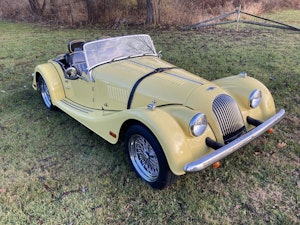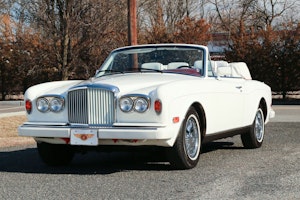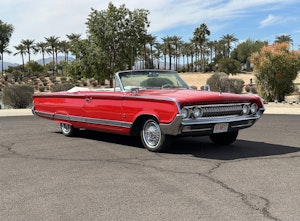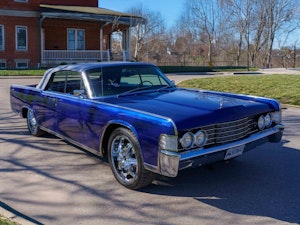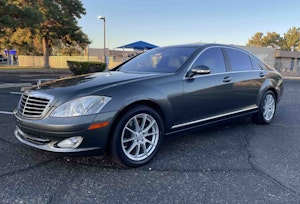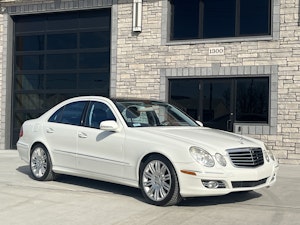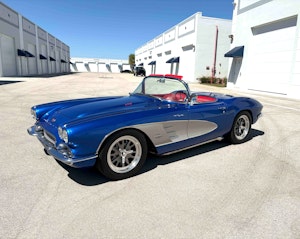Media | Articles
Memories of the best (but also the worst) Impala
I’ve been racing various kinds of cars wheel-to-wheel for about 15 years now. When I tell people that—and, like the old fellow in the dirty joke about the confessional, I’m telling everyone! —they are sometimes kind enough to ask two questions, namely: What was your favorite race? Followed by What was your least favorite race?
My favorite race was in 2018, when my son watched me drag a Honda Accord with 200 more pounds and 40 fewer horses than the competition up the pack of a Pirelli World Challenge race to win a couple of very nice awards with no corresponding cash value. My least favorite race? Oh, there are a couple of very good candidates for that, including one in which I hit the Armco head-on at 100 mph—and Mid-Ohio Sports Car Course made me pay for the privilege of having done so—but I think I’d have to pick a weekend in June of 2012 when I raced a Mazda2 with the Canadian Touring Car series at Mont-Tremblant.
The car was dog-slow compared to everyone else’s entries; I’d lose two or three car lengths on every straight. We didn’t have fresh tires, so I wasn’t exactly making up that gap in the corners. I finished dead last by a country (or Canadian) mile in front of what had to be the largest group of people to ever watch a semi-pro race in Quebec.
To make matters worse, I spent the whole 1750-mile drive there and back arguing night and day with my girlfriend of the time. Everything cost more than I’d expected. I had a raging headache for the entire weekend. There was just one bright spot in the whole ordeal: I’d rented a 2012 Chevrolet Impala.
If you want to know how ancient the Impala felt in 2012, I’ll give you this tidy factoid: Its platform was originally designed to compete with the second-generation Honda Accord. Of course, the Accord was well into its third generation before the W-body overcame various production delays and got a sedan variant in 1988. By the time the FWD GM tween-sizer (a name I made up to connote the Impala’s combination of full-size exterior dimensions and mid-sized interior space) was retired in 2016 (as the fleet-only Impala Limited), Honda was halfway through the production run of the ninth-generation Accord. To add insult to injury, all Impalas from 2006–16 wore a front fascia which strongly resembled that of the seventh-generation Accord viewed through a funhouse mirror.
Marketplace
Buy and sell classics with confidence
Comparing the Impala to Accords of any stripe, however, misses the point. Nobody ever cross-shopped the two vehicles, for the same reason that nobody ever cross-shops Cole-Haan with Crockett&Jones. Impalas were bought in bulk by fleet operators and faceless corporations who didn’t care about the flexible-flyer chassis or Playskool interior. Presumably they were also occasionally purchased by the NASCAR fan who wanted something just as painful, but considerably less permanent, than having the Chevy bowtie tattooed onto their neck.
For most of its life, the next-to-last Impala should really have been called Biscayne or something like that. Only the transverse-V-8 Impala SS exhibited any of the joie de vivre one would associate with its predecessors from the ’60s or the early ’90s —and you were still stuck with the charmless interior appointments, mismatched shades of dashboard black, and aqua-puke instruments. In 2012, however, General Motors did what it always does when it’s about to discontinue a car, whether we’re talking Fiero or Firebird or Regal: It finally made it right.
In the case of the W-body Impala, “making it right” meant putting the direct-injected, variable-valve-timed 3.6-liter V-6 between the front axles, 302 horsepower, 32-plus miles per gallon, a better power-to-weight ratio than the 5.3-liter V-8 cars and much lower operating costs. The rev-hungry nature of the V-6 kept torque steer to a minimum, and the six-speed automatic let it spin in every gear. At full boil, the hideously bland Impala would emit a cultured growl not unlike that of an old Alfa Romeo Milano Quad or something like that. In terms of real-world shove and passing ability, it was more 540i than 530i, if you know what I mean.
The ’80s-typical, light-as-a-feather GM control efforts, combined with the absolutely delightful engine, gave the Impala an insubstantial feel belying its 200-inch length. Having survived 30 years of development and production, the W-body’s unfashionably low beltline and substantial glass area made it feel sporty in an oddly vintage fashion, like a Porsche 993 or the evergreen R107-generation Mercedes SL (which, I feel compelled to mention, did not last nearly as long in showrooms as the Lumina/Impala lineage).
Over the course of more than 1700 miles, in environments as different as downtown Montreal and I-80 through Pennsylvania, I cultivated a genuine affection for the ancient Impala and its newly transplanted heart. It was a great place to spend the 450 or so miles you could get between fill ups. Just enough connection to the road to keep you from feeling like you might simply slip off a high-speed freeway bend—and no more. Everything was dirt-simple to operate. The trunk had plenty of space. And while the noise/vibration/harshness level was more Grand Prix than Ghost, the wind roar was pretty low, thanks to the General’s odd obsession with frontal area and coefficient-of-drag from the Lumina’s conception in 1982.
The 2012 Lumina was an outstanding example of how a car can be very good, and very useful, despite possessing none of the traditional automotive-magazine-approved qualities. It wasn’t handsome, the interior was offensively cheap, and it was obviously a superannuated variant of a car that was barely competitive on arrival 25 years prior. Despite all that, it did have qualities which real buyers appreciate: it was cheap to buy (many 2012 Impalas went out for under $20,000), cheap to run (it’s a GM W-Body), and highly capable of carrying both passengers and cargo. You could do much worse than to own and operate one.
The resale market agrees, incidentally. Eight years after they were built, many of these Impalas fetch half their original sale price with 100K or more on the odometer. The 2014 model which followed was a semi-modern “Epsilon” platform car: quiet, handsome, upscale. But it was too heavy for the 3.6 to give it real verve, and it cost as much as a Toyota Avalon, so the buyers stayed away in droves. The fleets were less enthusiastic about taking this high-priced, high-feature vehicle. Chevy knew it messed up, which is why it kept the old model around till 2016 as a fleet-only proposition.
That summer of 2012 put an end to a lot of things: my Canadian pro-racing ambitions, my tenure at the job I’d been working, my relationship with a lovely former exotic dancer who resented having to drive cross-country to watch me lose a race in a 100-horsepower hatchback. It was also the beginning of the end for the 3.6-liter Impala, which had just two years in the showroom. I can’t get those times back, which is fine. If I could get my hands on a solid 3.6-liter Impala LTZ with no funky smells or odd noises, however, I’d probably do it. Old, tired, and way past their sell-by date, those were the worst of Impalas —but they were also, in some ways, the best.

